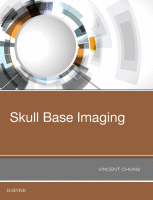Physical Address
304 North Cardinal St.
Dorchester Center, MA 02124

Temporal Bone Pseudofractures—Fracture Mimics An important challenge in detecting and classifying temporal bone fractures is the inherent complexity of the temporal bone anatomy. Although the evaluation of symmetry is helpful to distinguish normal anatomy from acute injury, temporal bone sutures…

Introduction This chapter presents an overview of tumoral lesions of the temporal bone. These lesions can be considered to be rather rare. Imaging plays a crucial role in describing the exact extent of these tumors and can be helpful in…

Acknowledgments I thank Nancy Verpoort who spent a considerable amount of time editing the figures and texts. Introduction In a wide variety of inflammatory and infectious diseases of the temporal bone, imaging studies are used to determine the extent of…

Introduction The endoscopic endonasal approach has become the preferred surgical approach to many tumors of the ventral skull base, both benign and malignant. Although advances in surgical equipment and technique have played a role in the development, imaging remains one…

The sphenoid bone is located at the central skull base and is commonly considered the most complex bone in the human body. Although the sphenoid bone is often neglected in relation to the adjacent temporal bone, it forms the major…

One of the earliest computed tomography (CT) evaluations of the paranasal sinuses was published by Hesselink et al. in 1978 as a two-part series: describing both normal and pathologic anatomy. Early CT studies were performed only in the axial and coronal…

The anterior skull base is a region of interest because it is frequently breached by aggressive disease such as malignancy and infection or even chronic long-standing but progressive lesions such as mucoceles. This resultant transcompartmental spread has a significant impact…